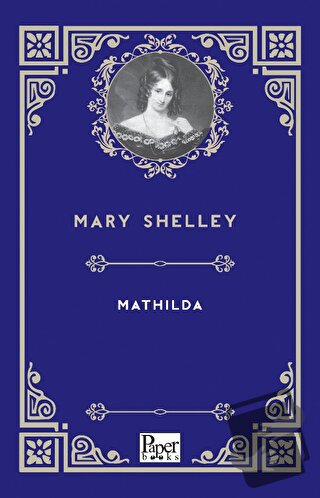
Mathilda is the second long work of fiction of Mary Shelley, written between August 1819 and February 1820 and first published posthumously in 1959. It deals with common Romantic themes of incest and suicide. The narrative deals with a father’s incestuous love for his daughter.
The act of writing this novella distracted Mary Shelley from her grief after the deaths of her one-year-old daughter Clara at Venice in September 1818 and her three-year-old son William in June 1819 in Rome. These losses plunged Mary Shelley into a depression that distanced her emotionally and sexually from Percy Shelley and left her, as he put it, “on the hearth of pale despair”.
It has become possibly Mary Shelley’s best-known work after Frankenstein.
| Taksit Sayısı | Taksit tutarı | Genel Toplam |
|---|---|---|
| Tek Çekim | 68,00 | 68,00 |
| 3 | 24,77 | 74,31 |
| 6 | 13,08 | 78,47 |
| 9 | 9,18 | 82,63 |
| 12 | 7,23 | 86,77 |
| Taksit Sayısı | Taksit tutarı | Genel Toplam |
|---|---|---|
| Tek Çekim | 68,00 | 68,00 |
| 3 | 24,77 | 74,31 |
| 6 | 13,08 | 78,47 |
| 9 | 9,18 | 82,63 |
| 12 | 7,23 | 86,77 |
| Taksit Sayısı | Taksit tutarı | Genel Toplam |
|---|---|---|
| Tek Çekim | 68,00 | 68,00 |
| 3 | 24,77 | 74,31 |
| 6 | 13,08 | 78,47 |
| 9 | 9,18 | 82,63 |
| 12 | 7,23 | 86,77 |
| Taksit Sayısı | Taksit tutarı | Genel Toplam |
|---|---|---|
| Tek Çekim | 68,00 | 68,00 |
| 3 | 24,77 | 74,31 |
| 6 | 13,08 | 78,47 |
| 9 | 9,18 | 82,63 |
| 12 | 7,23 | 86,77 |
| Taksit Sayısı | Taksit tutarı | Genel Toplam |
|---|---|---|
| Tek Çekim | 68,00 | 68,00 |
| 3 | 24,77 | 74,31 |
| 6 | 13,08 | 78,47 |
| 9 | 9,18 | 82,63 |
| 12 | 7,23 | 86,77 |
| Taksit Sayısı | Taksit tutarı | Genel Toplam |
|---|---|---|
| Tek Çekim | 68,00 | 68,00 |
| 3 | 24,77 | 74,31 |
| 6 | 13,08 | 78,47 |
| 9 | 9,18 | 82,63 |
| 12 | 7,23 | 86,77 |
| Taksit Sayısı | Taksit tutarı | Genel Toplam |
|---|---|---|
| Tek Çekim | 68,00 | 68,00 |
| 3 | - | - |
| 6 | - | - |
| 9 | - | - |
| 12 | - | - |
Mathilda is the second long work of fiction of Mary Shelley, written between August 1819 and February 1820 and first published posthumously in 1959. It deals with common Romantic themes of incest and suicide. The narrative deals with a father’s incestuous love for his daughter.
The act of writing this novella distracted Mary Shelley from her grief after the deaths of her one-year-old daughter Clara at Venice in September 1818 and her three-year-old son William in June 1819 in Rome. These losses plunged Mary Shelley into a depression that distanced her emotionally and sexually from Percy Shelley and left her, as he put it, “on the hearth of pale despair”.
It has become possibly Mary Shelley’s best-known work after Frankenstein.




















